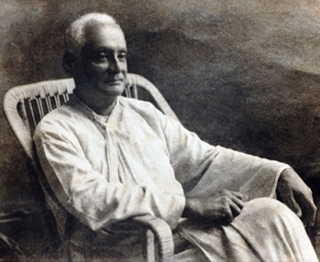
Gaganendranath Tagore was an Indian painter and cartoonist of the Bengal school. Along with his brother Abanindranath Tagore, he was counted as one of the earliest modern artists in India.

Sangeet Natak Akademi is the national level academy for performing arts set up by the Government of India.

The Pashchimbanga Bangla Akademi is the official regulatory body of the Bengali language in West Bengal, India. It was founded on 20 May 1986 in Kolkata to act as the official authority of the language and is entrusted with the responsibility of reforming Bengali spelling and grammar, compiling dictionaries, encyclopedias and terminologies and promoting Bengali language and culture in West Bengal. Though the Akademi has no enforcement power over their rules and regulations, they are widely accepted by the Governments of West Bengal and Tripura as well as a considerable number of private publishing houses and institutions such as the Oxford University Press and the Ramakrishna Mission.

Tarasankar Bandyopadhyay was an Indian novelist who wrote in the Bengali language. He wrote 65 novels, 53-story-books, 12 plays, 4 essay-books, 4 autobiographies, 2 travel stories and composed several songs. He was awarded Rabindra Puraskar, Sahitya Akademi Award, Jnanpith Award, Padma Shri and Padma Bhushan. He was nominated for Nobel Prize in Literature in 1971 and posthumously nominated in 1972.
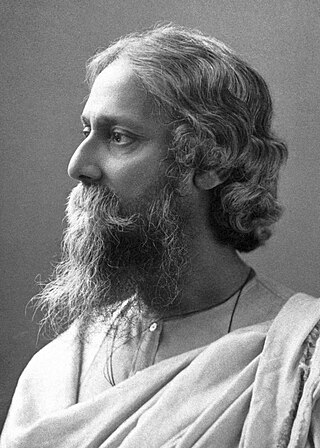
Bengali literature denotes the body of writings in the Bengali language and which covers Old Bengali, Middle- Bengali and Modern Bengali with the changes through the passage of time and dynastic patronization or non-patronization. Bengali has developed over the course of roughly 1,300 years. If the emergence of the Bengali literature supposes to date back to roughly 650 AD, the development of Bengali literature claims to be 1600 years old. The earliest extant work in Bengali literature is the Charyapada, a collection of Buddhist mystic songs in Old Bengali dating back to the 10th and 11th centuries. The timeline of Bengali literature is divided into three periods: ancient (650–1200), medieval (1200–1800) and modern. Medieval Bengali literature consists of various poetic genres, including Hindu religious scriptures, Islamic epics, Vaishnava texts, translations of Arabic, Persian and Sanskrit texts, and secular texts by Muslim poets. Novels were introduced in the mid-19th century. Nobel laureate Rabindranath Tagore is the best known figure of Bengali literature to the world. Kazi Nazrul Islam, notable for his activism and anti-British literature, was described as the Rebel Poet and is now recognised as the National poet of Bangladesh.
"Where the mind is without fear" is a poem written by 1913 Nobel laureate Rabindranath Tagore before India's independence. It represents Tagore's vision of a new and awakened India. The original poem was published in 1910 and was included in the 1910 collection Gitanjali and, in Tagore's own translation, in its 1912 English edition. "Where the mind is without fear" is the 35th poem of Gitanjali, and one of Tagore's most anthologised poems.
The Tagore family has been one of the leading families of Kolkata, India, and is regarded as one of the key influencers during the Bengali Renaissance. The family has produced several people who have contributed substantially in the fields of business, social and religious reformation, literature, art and music.

Jorabagan is a neighbourhood of North Kolkata, in Kolkata district, in the Indian state of West Bengal. As a neighbourhood, it covers a small area but its importance is primarily because of the police station.
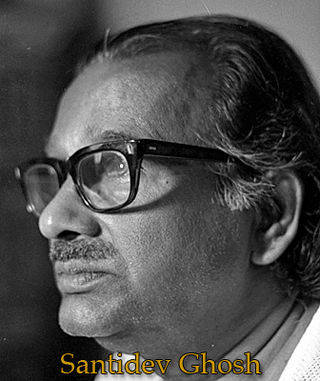
Santidev Ghose was an Indian author, singer, actor, dancer and maestro of Rabindra Sangeet.

Maitreyi Devi was an Indian poet and novelist. She is best known for her Sahitya Akademi Award-winning novel, Na Hanyate.

Kadambari Devi was the wife of Jyotirindranath Tagore and daughter-in-law of Debendranath Tagore. She was ten years younger than her husband, whom she married on 5 July 1868, at the age of nine. Her husband arranged for her to be educated. She was nearly the same age as her brother-in-law Rabindranath Tagore, being only two years older than him.

Vālmīki-Pratibhā is an opera by Rabindranath Tagore. The Bengali libretto was written by Tagore himself based on the legend of Ratnakara the Thug who later became Sage Valmiki and composed Ramayana, a Hindu epic.
Dwijen Mukhopadhyay was an Indian composer and singer whose musical career spanned six decades. He was a performer of Rabindrasangeet, Bengali basic songs, Bengali and Hindi film songs. He recorded more than 1500 songs, of which about 800 are songs of Rabindranath Tagore. He also directed music in Bengali feature films and composed music for popular Bengali basic songs.
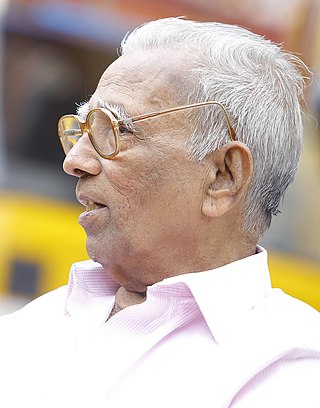
N. Kuttikrishna Pillai, better known as N. K. Desam, was an Indian Malayalam-language poet and literary critic from the southern state of Kerala. In 2009, his poetry collection Mudra won the Kerala Sahitya Akademi Award. In 2017, his Malayalam transliteration of Gitanjali by Rabindranath Tagore was selected for the Kendra Sahitya Akademi Translation Prize.

Chinmoy Guha is Professor Emeritus at the University of Calcutta, a Bengali essayist and translator, and a scholar of French language and literature. He has served as the Vice-Chancellor of Rabindra Bharati University and Director of Publications, Embassy of France, New Delhi. Earlier he taught English at Vijaygarh Jyotish Ray College in Kolkata for more than two decades, and French at the Alliance Française and the Ramakrishna Mission Institute of Culture for eleven and five years respectively.

Aarachaar is a Malayalam novel written by K. R. Meera. Originally serialised in Madhyamam Weekly in continuous 53 volumes, the novel was published as a book by DC Books in 2012. It was translated by J. Devika into English under the title Hangwoman: Everyone Loves a Good Hanging.

Pratima Devi (1893–1969) was an Indian Bengali artist, widely known for her artistic abilities. She was wife of Rathindranath Tagore. The poet took special interest in developing her capabilities.
Vasupurath Unnikrishnan Nair was an Indian writer of Malayalam literature, best known as a contemporary and associate of Vallathol Narayana Menon. He was the author of a number of books which include Tagorinte Nadakangal, the translation of three plays written by Rabindranath Tagore into Malayalam. Nair honoured by the Kerala Sahitya Akademi with the distinguished fellowship in 1981.
The Hindu Mela was an annual political and cultural festival that took place in India during the late 19th century. Initially established in 1867 by Nabagopal Mishra, Rajnarayan Basu and Manomohan Bose as the Chaitra mela, the mela was intended to establish unity amongst Indians. It was known for promoting sports, indigenous arts and crafts, nationalistic poetry, and songs. The mela met regularly until 1880, after which it lost its importance due to the establishment of other institutions such as the Indian National Congress.
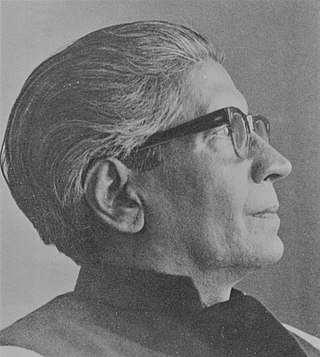
Abu Sayeed Ayyub was an Indian philosopher, teacher, literary critic and writer in both Bengali and English. Though born into a traditional, Urdu-speaking, Muslim family in Calcutta (Kolkata), he was so deeply captivated in his early teenage by the poems of the Indian Nobel Laureate Rabindranath Tagore that he taught himself Bengali so as to appreciate Tagore better. Later, when he started to write, it was mostly in his adopted language, Bengali. During the initial part of his writing career, Ayyub wrote on aesthetics, religion and socialism. However, it was his philosophical and scientific analysis of creative literature - in particular the poetry and the drama of Tagore - that finally brought him wide recognition as "one of the most serious and original Tagore scholars". Ayyub is also credited with "co-editing the first anthology of modern Bengali poetry". He taught philosophy at the University of Calcutta, the Visva-Bharati University and the University of Melbourne, and edited the literary and philosophical journal Quest.















